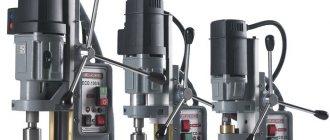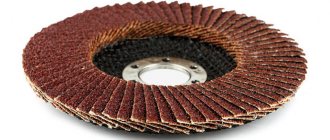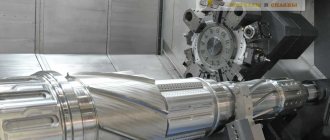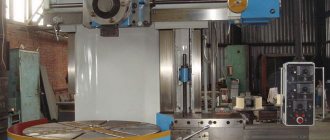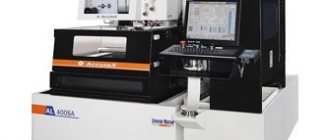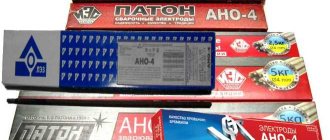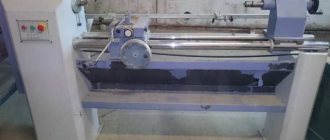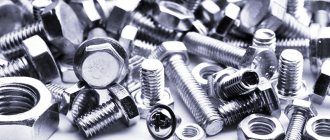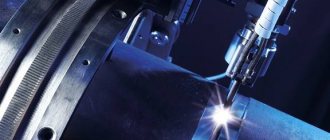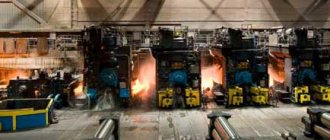A creasing machine is equipment for applying relief depressions to metal. Zigmachines are used for flanging, corrugating, corrugating, obtaining and processing longitudinal protrusions.
The working tools of the machine are 1 or several pairs of rollers with a shaped or smooth surface. Processing is carried out by rolling the workpiece between them.
Serving machine MOBIPROF
Types of rollers for zig machines
Manufacturers can change the labeling of the rollers they produce; here are the most common names.
- V - for decorating the edges of insulating boxes and pipes, rolling wire using ZB ZA;
- S - for the production of stopper ridges and stiffeners;
- SK - for making ribs of rectangular section. Wide ribs are used to fix rubber seals in the manufacture of round-section ventilation ducts;
- E, EV - the edges of the pipes are corrugated, making the diameter smaller for socket connections. Used for the manufacture of ventilation and drainage pipes and chimneys. EV rollers perform both stop rib and corrugation;
- BC - bend the edges on flat-shaped parts for flanging elements of rectangular air ducts, used in the manufacture of round-shaped plugs;
- KA - the set includes four rollers (two pairs) for connecting round pipes with further spot welding. They make connections with an overlap of 8 to 12 mm, and are used in the manufacture of small series of air ducts and chimneys;
In order for a beading machine to perform quality cuts, it must be equipped with a parallel roller clamp. The semicircular stop is an addition to the BB rollers. It is used for external flanging in round cutouts of flat parts.
Marking of produced rollers
The depth and shape of the seam depend on the choice of working rollers. How to use nozzles depending on their purpose:
| Marking | What can you do with these videos? | Application area |
| V | Shape the edges of parts, roll wire | For the production of insulating boxes and pipes |
| E, EV | Corrugate the edges of pipes to reduce the diameter | To create socket joints in ventilation and drains |
| S | Create stop and rigid ribs | For the production of various sheet metal parts |
| S.K. | Make wide rectangular ribs | For fixing rubber seals in round ventilation pipes |
| B.S., F. | Make double folding of vertical locks with selected flange height | For joining sheet metal workpieces, roofing work |
| B.C. | Bend the edges of flat elements | For beading rectangular duct parts and creating rounded plugs |
| BB | Bead the edges of the mortises | To create mortises of various shapes and vertical locks on different parts |
| K.B. | Besiege a vertical castle | For the manufacture of elements of pipelines for draining water and venting air |
| BD | Bead the edges of the parts | For creating long circular pipelines |
| Z.B., Z.A. | Roll the wire along the edge of the pipe | To increase the rigidity of thin metal pipes |
| K.A. | Connect round pipes followed by spot welding | For the production of air ducts and chimneys in small batches |
| AV | Seamlessly connect the mortises using the screw method | For the production of ventilation blanks |
| DIN 71550 | Make semicircular ribs | To create diameters on which a flexible hose is attached |
| M | Cut pipes across | For the production of any pipelines |
Some operations require additional parts. For example, cutting can only be carried out if the rollers are equipped with parallel roller pressure. To cut out rings you need a special holder. To bead the outer edges of round holes you will need a semicircular stop.
Types, advantages and disadvantages
All zigovochny equipment is divided into three large groups: manual, hydraulic and electric. The ability of the equipment to work with metal of a certain thickness depends on their type.
Manual equipment cannot cope with thick metal and requires great physical effort to operate. They are used in small tinsmith shops.
The advantages of manual crimping machines include:
- compactness;
- low cost;
- mobility;
- autonomy.
Main disadvantages:
Varieties
Sealing machines are classified depending on various factors. By drive type:
- Manual. Simple designs that begin to work after applying physical effort. The position of the rollers is changed manually. Manual beveling is not used for working with thick metal.
- Electrical. In terms of power, these models are considered average. The shafts rotate thanks to an electric motor. Electromechanical creasing machines are more expensive than manual ones, but they can process sheets of large thickness.
- Hydraulic. Powerful equipment. A special feature of hydraulic machines is reliable clamping of the rollers. Disadvantage - large dimensions, large mass.
A separate classification relates to the size and weight of equipment. There are compact, portable models that are easy to transport. Large-sized machines have been developed for enterprises that are suitable for mass production.
Device classification
A large number of modern crimping machines can be divided into classes according to their most important indicators or design features. Most often, such machines are divided depending on the type of drive:
- Manual - the most common version of the zigovochny machine. All operating mechanisms of this machine are activated solely through the use of physical force of its operator. For example, in the upper part of the machine there is a special handle, with the help of which the rollers with working rollers are pressed. The rollers can be scrolled together with the part fixed between them. To use this type of machine efficiently, the operator requires certain skills, since several controls must be used simultaneously to process a part. The maximum thickness of the part that can be worked with on this machine is 15 mm.
- Hydraulic ones are the most powerful staking machines, but at the same time the most expensive. The technical characteristics of such machines allow you to work with metal workpieces of impressive thickness. Hydraulics provide high-quality pressure of the rollers to the workpiece and securely fix it. At the same time, the scrolling of the rollers and the movement of the workpiece being processed is carried out by means of an electrical type wire mechanism. In addition to the high price, these devices have another drawback - serious dimensions. That is why these devices are most often used in large industries.
- An electrically driven device is considered to be a medium-power version of a staking machine. Such a machine is more expensive than a manual one, but much cheaper than a hydraulic one. It is worth noting that, in addition to the electric drive, this machine also has a classic mechanical drive. It is with its help that I fix the workpiece between the rollers, which rotate thanks to the electric drive.
You can activate the operation of such a machine using a foot pedal. Thus, both hands of the person who works at this machine remain free, which greatly facilitates the process of processing workpieces. A characteristic feature of this type of machine is the possibility of its effective use both in home workshops and in serious enterprises.
Purpose and design of beading equipment
Before you begin to understand what a crimping machine is, you need to understand why creasing is performed. In the process of carrying out this technological operation, recesses of a semicircular profile are applied to the surface of the sheet metal workpiece. Such recesses, which are called ridges, act as stiffening ribs; their presence on the surface of a thin-walled metal product makes it much stronger. The size of the recesses, for the formation of which the zig machine is used, completely depends on the thickness of the metal used for the workpiece. To select this parameter, which is very important for such a technological operation, special lookup tables are used.
Many modern manufacturers produce crimping machines, the technical capabilities of which allow them to perform a whole range of technological operations. The operations to which sheet metal blanks are subjected during their circular processing include corrugating their surface, cutting and flanging. More powerful and productive, when compared with manual equipment, are electric crimping machines. Due to the presence of a powerful electric drive in their design, such machines make it possible to successfully process workpieces made of thicker sheet metal.
Main parts of the seaming machine
Regardless of whether the crimping machine is equipped with a manual or electric drive, the design and operating principle of such a machine remain virtually unchanged. The main design elements of such machines are two shafts, the axes of which can be located horizontally or at some angle. It is these shafts, rotating relative to each other in the opposite direction, that impart rotation to the working rollers fixed at their end part. The zig machine works, both manual and electric, according to the following scheme:
- the sheet metal blank is placed between two forming rollers of the equipment;
- the machine shafts are brought together, thereby ensuring clamping of the workpiece between the working rollers;
- using a manual or electric drive, the shafts are rotated;
- when the shafts and working rollers rotate, the part sandwiched between them also begins to move; When a workpiece is moved between working rollers with protrusions of the required size and shape, corresponding depressions are formed on the surface of the sheet metal under the influence of plastic deformation.
Where to start making a sheet bending machine
To make a machine for bending sheet metal, you will need a drawing of such a device or its detailed photos. In addition, a number of important factors should be taken into account, such as the force that will need to be applied to use the sheet bending machine, its weight and dimensions (on which mobility depends), cost and availability of components. As a result, we obtain the following initial parameters.
- The maximum width of the sheet that will need to be bent is 1 m.
- Maximum thickness of sheet material: galvanized – 0.6 mm, aluminum – 0.7 mm, copper – 1 mm.
- The number of operating cycles that will be carried out without readjustment or repair is 1200.
- The maximum bend angle of a metal profile, obtained without manual finishing, is 120 degrees.
- It is highly undesirable to use workpieces made of special steels (for example, stainless steel).
- In the design of a sheet bending machine, welded joints that do not withstand alternating loads should be avoided.
- You should limit as much as possible the number of sheet bending machine parts that you will need to order externally, using turners or millers.
It is very difficult to find a drawing of a device that would satisfy all these requirements, but the most successful one can be modified.
Features of the technological process
Metal beading is an easy operation to perform, but it requires some skills and knowledge of the technological process. Since, thanks to heaving, softer material acquires greater strength, it is necessary that the elements are made with high quality. To do this, you need to know how the process of applying relief occurs. It is as follows:
- The upper roller is raised onto the lower one to place the part for processing and then the raised upper roller is lowered onto it.
- It is very important that during the zigging process uniform corrugations are applied and the distance is taken into account, so it is imperative to use a stop.
- The degree of fixation of the workpiece is adjusted using the existing screws.
- Another feature is that if you use a more durable material, you need to take into account that for creasing in this case it is necessary to use a hydraulic or electric drive on the equipment.
- For example, if corrugation is used on aluminum or zinc materials, then it is necessary to increase the distance between the ridges, as well as increase the radius of the ridge itself.
- The shafts with corresponding rollers have the opposite effect during operation, that is, they rotate in the opposite direction, which as a result creates the necessary depressions on the sheet metal.
If the first time applying relief to thin-sheet metal was not done enough, then you can carry out several more cycles along the already completed zigs. Only after achieving the desired result can the workpiece be removed.
Short description
Applying a kind of relief pattern to the surface of thin sheet metal is carried out using special equipment called a zig machine. It is equipped with a pair of rollers, which during operation make corresponding ridges (grooves), which can be not only flat, but also three-dimensional types of workpieces.
In addition, with the help of this mechanism, corrugation, cutting, and flanging of sheet metal are carried out. This type of zigging machines is presented in several varieties, these are manual and electric zigging machines. But there is also a hydraulic one, but it is mainly used in large industrial enterprises.
According to the principle of application, they are no different, except that manual machines produce corrugation of a metal sheet with a thickness of 0.3 to 1.0 mm. But electric ones have a lot of power, so they can apply reliefs on a metal surface of more than 2.0 mm.
In principle, all types of beading machines are not very different from each other, but they have different capacities. In addition, these shafts can have different locations, for example, horizontal, vertical and inclined positions. Rollers with the required relief are put on them directly.
How to choose the right zig machine
Equipment is selected according to several main parameters:
- Purpose. For roofing workshops and crews, hand-held machines, inexpensive electromechanical models, and universal machines with replaceable drives are suitable. Zig machines do an excellent job with metal up to 1 mm, are mobile, and easy to use.
- For mass production and the manufacture of large-sized products, for example, air ducts, more powerful equipment is needed.
- Permissible thickness of rolled products. Industrial creasing machines are capable of applying relief, cutting, and flanging rolled products up to 4 mm or more. The maximum metal thickness for low-power electromechanical and manual equipment is 0.8-2.5 mm.
- Roller offset and center distance. The characteristic determines the processing width. The larger the reach, the wider the workpieces and parts can be processed.
- Supply voltage of electromechanical machines. Most stationary models are equipped with a 380 V motor and require an electrical connection. They also produce machines for small workshops with single-phase 220 V electric motors.
When choosing machines, they also take into account the dimensions, the presence of a reverse function, hydraulic clamping, and other parameters.
Types of creasing machines
According to the type of drive, manual ones
,
electric
crimping machines.
Manual creasing machine
Non-drive models can handle rolled products up to 1.25 mm thick. The machines are lightweight, easy to rearrange and transport, and do not require connection to an electrical outlet. The equipment can be installed in small workshops and on construction sites. Zigmachines of this type are used in piece production of small batches of products.
The main advantages of manual seaming machines:
- Mobility.
- Easy to use.
- Light weight and dimensions.
The machines do not consume electricity, do not require installation on concrete and fixation to the floor. In a number of models, installation of an electric drive is allowed. Such machines are universal, they allow you to reduce the time required to perform similar operations and are used in both small-scale and piece production.
Electromechanical machines. The equipment is driven by a three- or single-phase motor. To regulate the shaft rotation speed, a gearbox or frequency converter is used.
Variable frequency drive machines are more expensive. The advantages of such models include low energy consumption and the lack of regular maintenance of the gearbox.
The main advantages of electromechanical zigmachines:
- High performance.
- Ability to process rolled metal up to 2; 2.5; 3 mm.
- Relatively small size and weight.
Machines with a reversible drive significantly reduce the processing time of stainless steel or thick rolled products. To extrude a ring or lock in 2 passes, you do not need to rearrange the workpiece; just switch the rollers to reverse rotation.
The design of a number of models of electric drive machines involves dismantling the power unit and installing a handle. If necessary, such equipment can be easily converted into manual machines and used on non-electrified construction sites.
To process rolled metal 2.5-4 mm, powerful machines with hydraulic clamping are used.
Sigma machines have high productivity. Processing of sheets or parts made of hard steel grades and thick rolled products is carried out in one pass. The equipment is used in the serial production of tanks, chimneys and other structures.
Types of creasing machines
The main difference between zig machines is the type of drive. He can be:
- manual;
- electrical;
- hydraulic.
There are also modern CNC bevelers. This type of control allows you to fully automate the process, greatly speed it up and increase productivity.
The manually driven machine is capable of processing metal sheets no thicker than 1.2 mm. Securing the part and rotating the shafts is done with special handles. The zigovochny machine is attached to the work table using a clamp. The main advantages of manual equipment are that it is mobile and compact.
The downside is the increased requirements for operator skills. It is necessary to have certain skills in order to move the handle and hold the part in the desired position at the same time. Manual crimping machines are suitable for small production workshops or high-rise installations.
Zig machine TZ 12 manual type
An electrically or hydraulically driven crimping machine can bend sheets of metal up to 4 mm thick. Such machines are used in large production workshops. The electric beading machine is powered by a motor, and the speed is changed using a frequency converter. Its convenience is that the worker’s hands are free, and control is carried out using a pedal or remote control. This increases productivity, which is very important for industries with a large volume of products.
Electromechanical bevel machine
A hydraulic-type crimping machine can only be stationary. The pressure shaft is lowered using a hydraulic cylinder, and the rollers are driven by an electric motor. This crimping mechanism is convenient for working with thick sheets of metal. These machines are highly productive and consume little electricity, so to some extent they can compete with machines equipped with CNC.
Hydraulic type creasing machine
DIY making
If you wish, you can assemble a manual zig machine with your own hands. To do this, it is enough to find a drawing, prepare materials, tools, and perform the work.
Do-it-yourself piecing machine (Photo: Instagram /lodkakhv)
Preparation
Before you start assembling a manual zigging machine, you need to prepare tools and consumables:
- drill with metal drills;
- a small grinder with discs;
- welding machine;
- two shafts;
- gears for transmitting force between shafts;
- metal corners, profiles, sheets for the manufacture of beds, frames, housings;
- fasteners;
- handle for rotating moving parts.
- screw for adjusting, pressing the shafts.
Selection principles
When purchasing a crimping machine you need to consider:
- dimensions of equipment, premises;
- type of drive;
- roller material;
- control system;
- number of rollers;
- thickness of metal for the manufacture of housings and moving elements.
We must not forget that there are different types of videos. They vary in shape. You need to think in advance about the purpose of using the installation and purchase a set of consumables.
Compact machine (Photo: Instagram / metalmaster_stanki)
Advantages and disadvantages
Advantages:
- mobility of hand models;
- ability to work with parts of different thicknesses;
- Ease of Management;
- low price;
- long service life;
- the ability to join metals that cannot be processed by welding.
To work with parts of large thickness, an electric or manual drive is not enough. You need to buy expensive hydraulic equipment, which takes up more space.
Questions and answers
What products can be made on crimping machines?
Buckets, deflectors, and funnels can be produced using crimping equipment. The machines allow you to roll thrust ridges, corrugate metal blanks, make drainage elbows, etc.
Are there any differences in the operating principle of manual and electric seaming machines?
There are no fundamental differences in the operation of manual and electrical equipment.
What machines can handle metal with a thickness of 3-4 mm?
Metal of this thickness can only be processed on electric or hydraulic industrial crimping machines.
What does roller overhang affect?
Regardless of the type of equipment drive, roller overhang affects its technical capabilities.
What type of crimping machines is best to use for roofing work?
In roofing work, it is better to use manual zig machines. They can be lifted directly onto the roof.
Areas of application for creasing equipment
Equipment designed to perform beading, even though the name of such a technological operation is familiar mainly to metalworking specialists, is actively used in various fields of activity. Sealing machines are practically indispensable for the manufacture of elements of roofing structures, in particular, for the formation of their edges.
Examples of drainage elements made on a crimping machine
It should be noted that in the construction industry, bending machines have found very wide application. Using such machines, in particular, the following elements of building structures and communication systems are made from sheet metal: parts of drainage and air duct systems, insulation for heating mains, etc. In the construction industry, manual staking equipment is predominantly used, since it is characterized by its small dimensions and insignificant weight, does not require an electrical supply for its operation and can be used almost anywhere.
The creasing machine can also be used to reliably connect cylindrical workpieces made of thin sheet metal together. Rollers for equipping a zig machine of this type, when a cylindrical workpiece passes through them, form locks on it, with the help of which the two parts are connected.
Rolling the lock on the air duct elbow
When making connections using locks, unlike welding, there is no thermal effect on the metal parts, which eliminates the possibility of their warping. In addition, such a machine, which you can also make yourself, does not require any additional consumables for its use.
To expand the functionality of a staking machine, including a manual one, it can be equipped with additional working parts. Machines equipped in this way can be used not only as creasing equipment, but also as bending and profiling equipment. Modern creasing machines for industrial use are often equipped with automated control systems, which increases their productivity and accuracy of technological operations performed with their help.
Special attachments allow you to make folds for connecting thin-walled pipes
Checking the machine for functionality and fine-tuning
After you have assembled a device for bending sheet metal with your own hands, you need to test it for functionality. To perform test bending, it is better to use a softer metal, which can be a sheet of tin, which bends very well. The sheet is placed on the base of the bending machine and fixed to it using a clamp. When performing test bending, the machine clamp can be temporarily tightened to its base with clamps or threaded rods with overlays can be used for these purposes.
If the position of these structural elements is not entirely correct, it is corrected and only after that they are thoroughly welded to the frame. In order to reliably fix the clamping device of the machine during bending, use bolts protruding above the frame, which must coincide with the holes in the brackets of the clamping mechanism. To install such bolts on the frame, holes are drilled in it into which an M10 thread is cut. The bolts are screwed into such holes from bottom to top, after which their heads are welded to the bottom of the frame.
Installing clamping bolts with springs
To ensure that the bolts installed on the frame easily fit into the holes in the clamping mechanism brackets, they are increased to a diameter of 10 mm. It is better to choose nuts that will screw onto the top of such bolts and thereby fix the clamping mechanism on the frame of the bending equipment in the form of handwheels; this will significantly increase the ease of working with your homemade machine. The clamping mechanism must be pressed out while unscrewing it from the frame. To do this, you can put springs or rubber shock absorbers on the bolts with which it is fixed.
We weld rods to the bolt heads as handles
Having assembled a homemade machine for bending sheet metal using the method described above, you will not wonder how to bend tin or how to bend painted metal: even galvanizing can be processed on this equipment with fairly high efficiency. Meanwhile, such a bending machine also has a number of disadvantages.
- The design of fastening the cheeks and the punch is not well thought out; during the operation of the bending machine, these elements constantly rub against each other and, accordingly, actively wear out. As a result, play occurs in the mechanism, leading to inaccuracies during the bending process. This drawback can be corrected by using bearings in this unit.
- Bending machines of the design described above are not characterized by high productivity and can only be used if it is necessary to perform a small amount of work. To make a more productive manual machine, it is necessary to improve the design of the clamping mechanism.
Homemade bending machine at work
The video is very helpful in making such a machine with your own hands. Typically, many professional tinsmiths who assemble machines for bending sheet metal practically from scrap metal prefer to use homemade equipment in their activities.
Roller-type bending machines, which have a more complex design, can also be made independently. However, no matter what type of machine you are going to make yourself, you should keep in mind that you will operate such equipment manually, so making it too large and powerful does not make sense. If we talk about the features of using roller bending machines, it should be borne in mind that when processing a workpiece on such equipment, its individual sections may be subject to deformation. This is why professional tinsmiths do not really like to work on devices of this type.
How to make staking equipment with your own hands
Purchasing a serial crimping machine, even a manual type, makes sense if working with sheet metal is part of your professional activity. In all other cases, if such equipment is needed to perform simple housework, it is better to make it yourself, especially since it is not so difficult to do. What is important is that such a machine with your own hands can be made from very accessible and inexpensive materials.
Before you start making your own crimping machine, you need to find drawings of such a device, and you can take serial equipment as a basis. This is not difficult to do, since many home craftsmen post machine drawings and even video instructions on the Internet.
Scheme of a crimping machine
Shaft drawing (the upper shaft is made without space for the handle)
Shaft housing drawing
Zig machine bed: height 25 cm, width determined by the height of the box
Thrust-limiting shield: dimensions 18x20 cm, thickness 0.2-0.3 cm. Side struts are welded
A suitable handle can be selected separately, so as not to have to make it yourself
Drawing of machine working rollers
To assemble your beading machine (even a simple manual type machine), you will need to prepare the following structural elements of the machine:
- device housing with a protective casing;
- bracket;
- cylindrical shank;
- two working shafts;
- retaining bolt;
- screw equipped with a folding handle;
- spring type device;
- gear elements;
- directly the videos themselves.
Homemade manual crimping machine
The device is fastened using a special screw, while the shank of the mechanism fits into the cup of the bracket, around which the machine body must rotate freely. The device body is fixed in a certain position using a locking bolt. A spring mechanism, activated by rotating the handle, is responsible for moving the upper shaft of the machine relative to the lower one.
To rotate the working rollers of the machine, another handle is used, which is connected to the working shafts through a gear drive. To make the work of the operator of such a machine safer, the elements of its gear transmission are covered with a protective casing. On the Internet, you can easily find videos that demonstrate in detail the process of making homemade crimping equipment.
Homemade electrically driven zigging machine
The process of processing sheet metal workpieces performed on a crimping machine, the details of which can also be found in the video, is as follows:
- a stop is pre-installed on the workpiece, the position of which can be adjusted using special screws;
- the processed edge of the part is mounted on the lower roller;
- by rotating the handle, the second roller is lowered onto the edge of the workpiece;
- By rotating the handle of the machine, the rollers and the part sandwiched between them are set in motion.
After the required processing result is achieved, which may require several cycles of turning the workpiece, the upper roller is raised and the finished product is removed from the machine.
Making at home
If you do not want to buy a factory-made crimping machine, you can make it yourself. This option is suitable for those who work with metal in home workshops and in limited quantities. For industrial enterprises, it is better not to use self-made equipment.
One of the advantages of a homemade machine is its simplicity and low cost of production. All the main parts can be easily found on your farm or purchased on the market. Of course, the number and nature of the parts depends on the type of device you are going to make. There are several options for producing a zig machine at home. We offer one of them.
To create the device you should prepare the following parts:
- Bracket.
- Working shafts (2 pieces).
- Cylinder shank.
- Device body.
- Protective cover.
- Device with a spring.
- Locking pin.
- Gear parts.
- Screw with folding handle.
- Rollers.
The rollers of a homemade zig machine are driven by another handle and by means of a toothed belt drive. When creating your own machine, be sure to ensure that the transmission elements are covered with a special casing.
Such a structural element will certainly make the operator’s work safer. For detailed information, watch the corresponding videos, of which there is no shortage on the Internet.
Video: Homemade manual ZIG machine.

